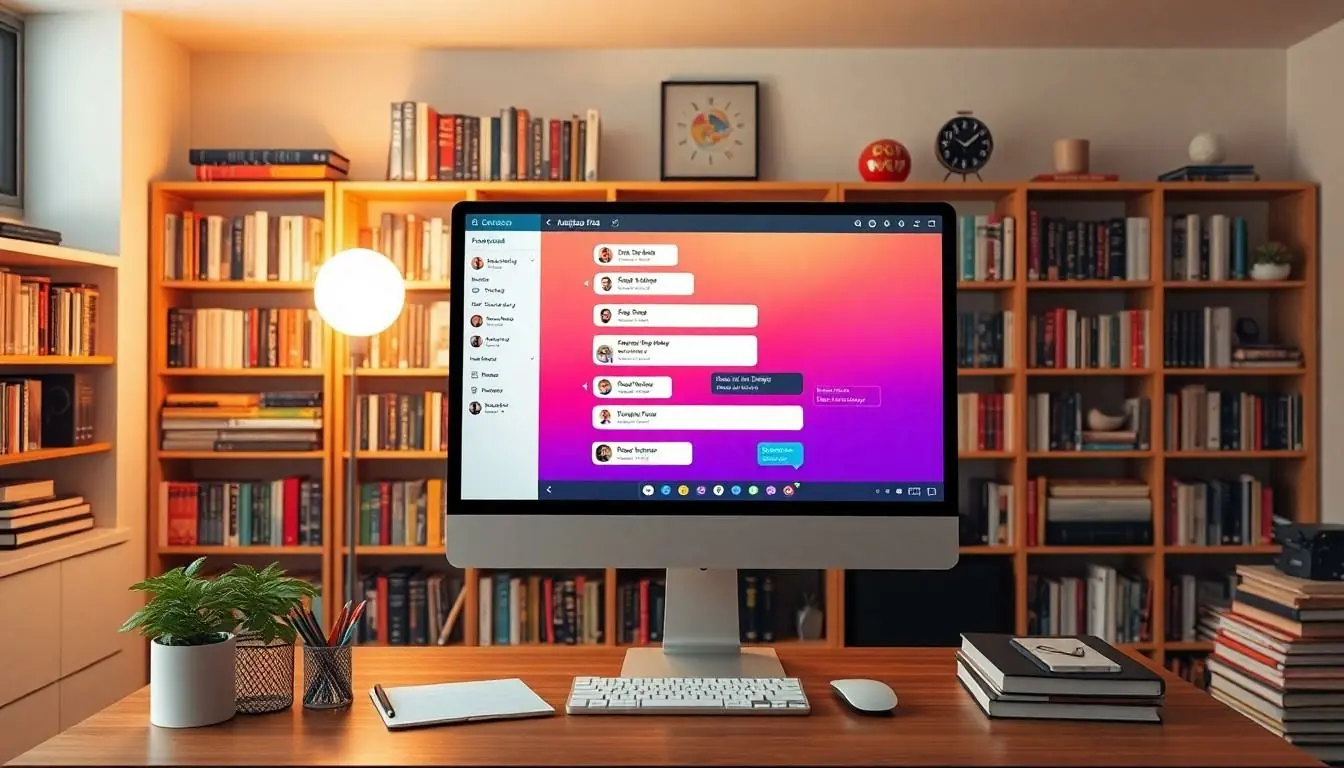In a world where AI is cranking out essays faster than students can procrastinate, the question arises: does Turnitin check for ChatGPT? Picture this: you’re sitting in front of your computer, your trusty AI buddy has just whipped up a masterpiece, and you’re feeling like a literary genius. But then the panic sets in—what if Turnitin catches on?
Turnitin’s mission is to sniff out plagiarism like a bloodhound on a scent trail. With the rise of AI-generated content, educators are left wondering if their trusty tool can detect these clever little bots. So, can you rest easy knowing your ChatGPT creation won’t land you in hot water? Let’s dive into the nitty-gritty and find out if your AI-assisted brilliance stands a chance against the plagiarism police.
Table of Contents
ToggleOverview of Turnitin
Turnitin serves as a prominent tool for detecting plagiarism in academic writing. Its primary function involves comparing submitted work against an extensive database that includes student papers, academic publications, and web content. This thorough process ensures that it can effectively identify similarities and potential instances of plagiarism in texts.
Examiners use Turnitin not just to catch dishonest practices but also to promote original work among students. Several institutions worldwide rely on Turnitin for maintaining academic integrity. The platform provides detailed originality reports, highlighting matched content and its sources.
Turnitin utilizes sophisticated algorithms to analyze submitted materials. Ongoing improvements in its technology enable it to adapt to emerging writing patterns, which may include AI-generated text. While it excels in detecting traditional plagiarism, questions arise regarding its ability to identify writings produced by AI models like ChatGPT.
Distinct from conventional plagiarism, AI-generated content may exhibit unique characteristics. This poses challenges for detection tools. If Turnitin’s algorithms haven’t been specifically trained to recognize AI-generated text, identification may not occur. Consequently, many educators remain curious about the platform’s evolving capabilities.
Turnitin also allows for integration with various learning management systems. This flexibility aids in streamlining submissions and reviewing processes. Its comprehensive feedback mechanisms encourage students to revise their work for better originality scores. As concerns about AI tools in academia rise, understanding Turnitin’s current strengths and limitations becomes crucial for both students and educators alike.
Understanding ChatGPT

ChatGPT represents an advanced language model developed by OpenAI. This tool generates human-like text based on input cues.
What is ChatGPT?
ChatGPT is a natural language processing AI that assists users in generating text, answering questions, and engaging in conversation. Many people use ChatGPT for various applications, from composing emails to creating essays. As a chat interface, it can adapt to different writing styles and tones, making it versatile for various audiences. Users find its ability to provide contextually relevant responses appealing, as it enhances interaction and productivity.
How Does ChatGPT Work?
ChatGPT utilizes deep learning techniques to analyze and generate text. The model, built on the transformer architecture, processes massive datasets to understand language patterns. It predicts the next word in a sentence by evaluating preceding words, leading to coherent and context-appropriate outputs. Users input prompts or questions, and the AI generates responses that align with the provided context. Its training on diverse text sources allows it to handle a wide range of topics effectively.
Turnitin’s Capabilities
Turnitin serves as a crucial tool in maintaining academic integrity. Its primary function involves comparing submitted work against an extensive database to pinpoint similarities.
Plagiarism Detection
Plagiarism detection remains at the heart of Turnitin’s utility. It scans submissions for matches with a vast repository of student papers, academic articles, and online content. When students submit work, Turnitin generates originality reports that display potential matches, helping educators address academic dishonesty. Many institutions depend on this function to ensure that students produce original content. The software identifies paraphrased material and direct quotes, emphasizing the importance of proper citation practices in writing.
AI Content Detection
AI content detection is an evolving aspect of Turnitin’s capabilities. It utilizes advanced algorithms to analyze text generated by machine learning models, including those from ChatGPT. Such content often possesses distinct characteristics that may challenge traditional detection methods. Turnitin adapts to these changes by continuously updating its system to improve detection of AI-generated text. Educators can leverage these capabilities to better understand the impacts of AI on student writing and uphold standards of originality in academic submissions.
Does Turnitin Check for ChatGPT?
Turnitin has developed various methods to detect AI-generated content, including that created by ChatGPT. Understanding its technologies and limitations can clarify how effective this detection tool is.
Current Technologies Used
Turnitin employs machine learning algorithms and natural language processing techniques to enhance its plagiarism detection capabilities. The platform scans submissions against an extensive database of academic works and online content. AI detection features analyze characteristics unique to AI-generated text. These algorithms adapt to emerging writing styles, including those typical of ChatGPT outputs. Turnitin generates originality reports that highlight potential issues, enabling educators to assess the authenticity of submissions effectively.
Limitations of Turnitin
Turnitin currently faces challenges in fully detecting AI-generated content. Some AI text may not resemble traditional writing, making it difficult to categorize. Turnitin’s algorithms may struggle with nuanced responses typical of models like ChatGPT. Understanding context and intent in AI writing poses another difficulty. As AI tools evolve continuously, so too must Turnitin’s detection capabilities. Limited mechanisms exist for differentiating between authentic student work and generated text, which can lead to false negatives in the detection process.
Implications for Students and Educators
Understanding Turnitin’s effectiveness in identifying AI-generated content affects both students and educators. Academic integrity serves as a cornerstone for educational institutions, fostering trust and value in academic achievements. Maintaining originality empowers students to engage critically with their work while developing essential skills. This commitment to honesty enhances credibility and prepares students for future professional environments.
Over time, challenges have emerged regarding Turnitin’s capacity to detect AI-generated text efficiently. Some students may unknowingly submit AI-assisted work, raising concerns about plagiarism accusations. Educators face the task of adapting their evaluation methods as technology evolves. Recognizing the limitations of current detection tools can help educators balance fairness with the integration of innovative technologies in learning. Overall, addressing these challenges supports a more informed academic approach, ensuring students and educators navigate the complexities surrounding AI in education effectively.
The intersection of AI-generated content and academic integrity presents unique challenges for students and educators alike. As Turnitin adapts its algorithms to better detect AI text, understanding its current capabilities becomes essential. Students can benefit from using AI tools like ChatGPT, but they must remain aware of the potential implications for their academic work.
Educators also have a role in navigating this evolving landscape, ensuring that assessment methods reflect the complexities introduced by AI. By fostering open discussions about originality and proper citation practices, both students and educators can work together to maintain academic integrity in an age of advanced technology. The ongoing evolution of detection tools like Turnitin will be crucial in addressing these challenges effectively.





